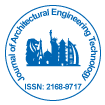开放获取期刊获得更多读者和引用
700 种期刊 和 15,000,000 名读者 每份期刊 获得 25,000 多名读者
索引于
- 哥白尼索引
- 谷歌学术
- 夏尔巴·罗密欧
- 打开 J 门
- Genamics 期刊搜索
- 学术钥匙
- 电子期刊图书馆
- 参考搜索
- 哈姆达大学
- 亚利桑那州EBSCO
- OCLC-世界猫
- SWB 在线目录
- 虚拟生物学图书馆 (vifabio)
- 普布隆斯
- 欧洲酒吧
有用的链接
开放获取期刊
分享此页面
抽象的
CQC as an Element of Aesthetic Control in Research of Architectural Space
Marynczuk IAP
Contemporary architecture is characterised by immense diversity of technical and technological solutions, in particular as regards aesthetics and composition. The moment we mastered the methods of safe erection of edifices, the problem of useable and aesthetic quality emerged. The composition quality control (CQC) is an original method of organising the issues related to deformation of architectural space by an analytical tool and it aims at analysing the space in the context of its designing and transformation. One may prove that space should be composed in a certain way for certain purposes and following certain pre-determined goals so that its form is not random. Composition is an extremely significant stage of creation – success of any project depends on the knowledge of its rules (on observing them or consciously violating them). Despite its vital role, composition is frequently marginalized and seen as a set of rigid, dead rules. This paper will argue that this is a misconception and the knowledge of theory is the key to conscious application of various elements of spatial composition and it helps in a truly creative process.

 English
English  Spanish
Spanish  Russian
Russian  German
German  French
French  Japanese
Japanese  Portuguese
Portuguese  Hindi
Hindi